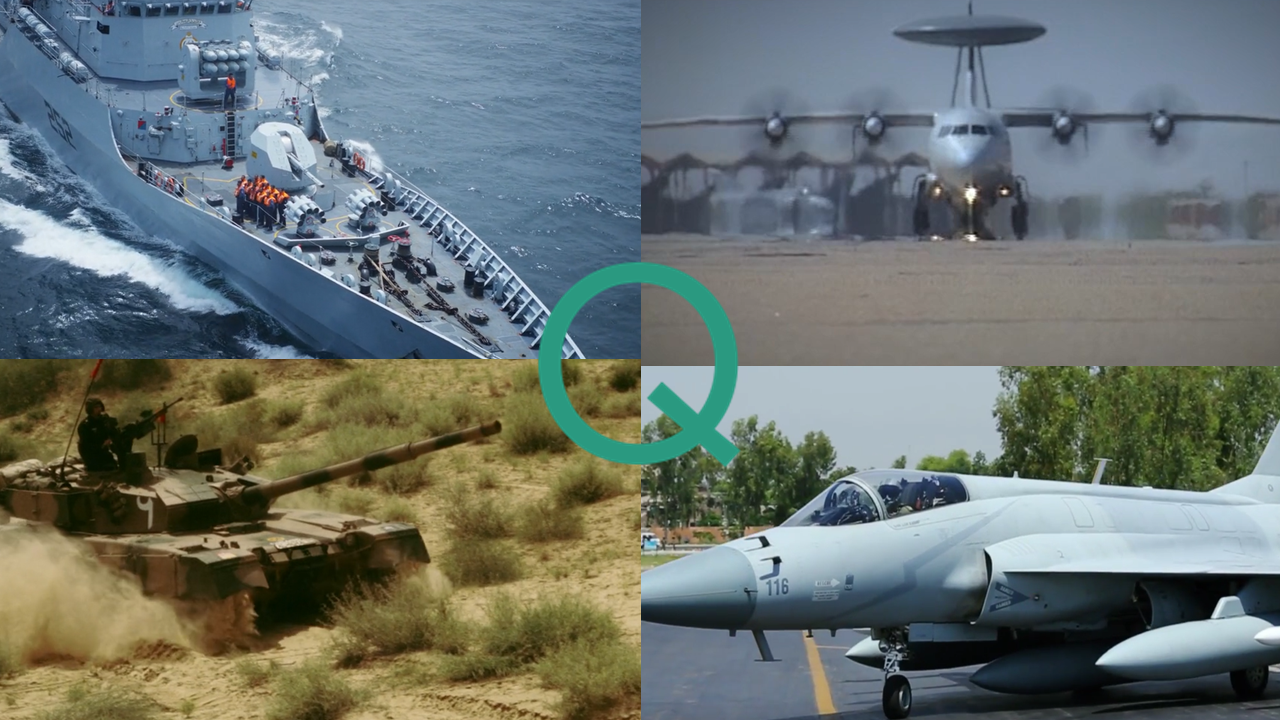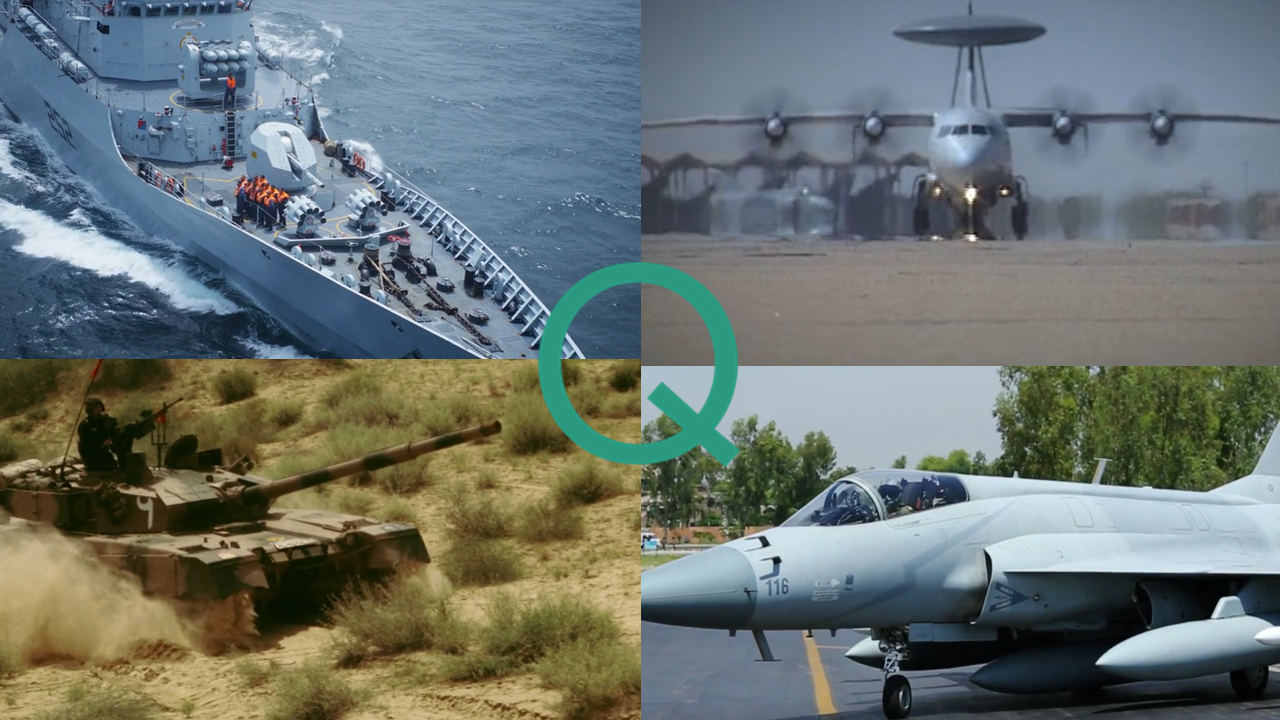2913Views 11Comments

This Week in Review: Emergent Powers & New Paths
Every Sunday, Quwa will close the week’s news with a review and analysis with the aim to tie together several topics into broader themes. It is an opportunity to reflect upon and discuss issues in a way where key trends are identified and individual news topics are connected into a “bigger picture.”
“Qatar orders new navy from Fincantieri”
The above is the title IHS Jane’s has given to cover Qatar’s naval modernization program, which is now in effect thanks to a $4.5 billion U.S. contract with Italian shipbuilding Fincantieri.
While one may feel tempted to dismiss its description of the matter as hyperbole, Jane’s is completely on-target with its assessment. The naval heart of the Qatar Emiri Navy’s fleet today is comprised of fast attack crafts (FAC), also commonly known as missile boats. By 2024, Qatar’s naval fleet will be led by four 3000-ton corvettes capable of not only deploying MBDA Exocet MM40 Block-3 anti-ship missiles (AShM), but MBDA Aster-30 long-range surface-to-air missiles (SAM) as well.
Whereas Qatar’s current naval layout is focused on patrol, maritime policing, and anti-access/area denial (A2/AD), the country’s future fleet will be capable of defending its sea lanes of all conceivable threats. For example, the Aster-30 SAMs on-board its new corvettes will be capable of engaging targets from at least 100km away. This is area wide air defence coverage that will not only threaten intruding combat aircraft attempting to damage Qatar’s in-land and offshore economic assets, but will also provide an umbrella for its other naval systems (such as a new amphibious landing platform dock and patrol vessels).
Keeping its Rafale and Apache procurements in mind as well, it will be worth seeing how Qatar’s security policy shift in the coming years. If one could make an ambitious guess, overseas naval and/or air bases could be the next step in what appears to be Qatar’s goal to have an internationally active presence. Such bases would not be forward operating bases ahead of possible combat areas, but port of calls with friendly states, such as Turkey. This will be key should Qatar decide to make full use of its new landing platform dock, which will enable it to carry a complete expeditionary force composed of infantry, light and/or heavy armour, and rotary-wing aviation. Turkey could also serve in the role of training and capacity building (via its many naval and amphibious exercises).
Botswana is building a new air force
Botswana’s possible purchase of up to 12 JAS-39C/D Gripen multi-role fighters may seem insignificant if viewed from the lenses of Gulf Arab procurements, but if brought to fruition, it would be a relatively major shift in southern Africa. The Gripen is a modern fighter, and outside of funding constraints, Botswana does not have a negative political stigma or regulatory stops to prevent it from arming its modern fighters with very modern weaponry.
To put it into context. South Africa, which possesses the strongest military in sub-Saharan Africa, possesses 26 JAS-39C/Ds. Of those fighters, only 13 are active (with the remainder in rotational storage). From antiquated F-5 Tiger IIs, Botswana may be on the verge of fielding a very powerful air force, in as far as sub-Sahara Africa’s geo-security climate is concerned.
Pair this with the synergy Botswana and South Africa could achieve by operating identical aircraft, and southern Africa as a bloc has a chance to become stronger.
Of course, there is a caveat – long-term economic prospects. Botswana’s ability to procure these Gripens will ultimately rest on whether Sweden is confident enough to extend a line-of-credit or loan to finance the sale. Furthermore, there is nothing to stop Botswana from only fielding a fraction of the fighter it buys on a peace-time basis.
Pakistan is forging a new path
It seems that Pakistan’s chapter on F-16s – at least new-built fighters – has effectively closed. It was not a U.S. embargo that put an end to it, but a combination of contributing factors: Pakistan’s reluctance to pay the full amount for the $70-80 million a unit fighter; a loose-lipped electoral climate in America in general, and a specific frustration with Pakistan’s apparent hesitancy to fight the Taliban (despite it committing to a costly counterinsurgency campaign for that very purpose); and a mounting Pakistani frustration in Washington’s role in Pakistan’s regional isolation (via its presence in Afghanistan and overtures to India).
These are but a few reasons why the possible sale of eight new-built F-16C/Ds for $700 million fell through, but among those within Pakistan’s defence circles (at least in the research and enthusiast sphere), the desire for F-16s has never been as low as it is today. Instead, forging new relationships and reinvigorating the domestic sphere is the order of the day.
In terms of relationships, Turkey’s Aselsan reported that it secured a $25 million U.S. contract to integrate its ASELPOD advanced targeting pod to a foreign country’s platform. Hurriyet, a major Turkish news outlet, reported that the Pakistan Air Force (PAF) was the customer. It is likely that the ASELPOD will be integrated onto the PAF’s JF-17. For Roketsan, Denel Dynamics and others, opportunities may exist in selling the PAF the requisite precision-guided air-to-ground munitions (e.g. laser-guided bomb kits, rockets and missiles) to the make the JF-17 Thunder a very competitive tactical strike asset.
With Pakistan’s expenditure for procurements set to be at $12 billion U.S. over the next eight years (bar negative or positive changes to change that figure), defence industry growth and domestic dependence will be vital for the armed forces. While some overseas vendors will benefit, Pakistan will be well advised (and expected) to focus on securing technology and building domestic capacity.
That said, irrespective of the country’s political and economic condition (for good or ill), frugality and accountability are essential. The armed forces have many needs, but some needs – such as the JF-17 Thunder – are simply integral to the strategic interests of the country, whereas the benefit of others may simply be marginal in the grand scheme of things.


11 Comments
by Sami Shahid
Is Qatar looking for JF-17 ? Well it should because French rafale is a long range jet and it would be not be suitable for internal security.
by U
How good is the ASELSAN pod compared to the Damocles pod PAF wanted to integrate on JF17?
by Bilal Khan - Quwa
The PAF’s apparent preference for the Damocles stemmed from the fact that the pod had a real combat record. There’s little one could do to dispute the existence of a truly effective pod. However, I also believe the PAF was hesitant to go the French route out of fear of the expensive long-term support costs and a cut in supplies, especially if Thales tries pushing a new pod instead.
That said, from a technical standpoint, the ASELPOD is comparable in every vital respect to the Damocles.
by Bilal Khan - Quwa
Alan Warnes (from Air Forces Monthly) said Qatar was thinking of the possibility of using the JF-17 to replace its Alpha Jets in the lead-in fighter trainer and ground attack role.
by Quraishi
Qatar has so much money, if they can they would use gold plated F-22 for internal security, and what is there in Qatar for internal security its so small. And btw u dont use fighter jets for internal security, lol, sounds more like local Waziristan security.
Their procurement procedures r different:
1. Go to a western nation, sales person must be white.
2. Ask them whats the best they have.
3. Ask for it, and when denied.
4. Tell them they will be paid twice and given personal commissions, and when denied.
5. Ask for whats the best they can purchase.
6. After getting the list, times 3 the requirement, and place the order. And still give commission as gift.
Now JF-17 is not from a western country, nor marketed/sold by white men/women.
So first try and understand the factors that affect purchase decision making.
by U
Hmm, so it was Pakistan who backed out of the potential acquisition , I thought may be France said No, as I expect them to. If you classify both the pods in generations, are they of the same generation?
by Bilal Khan - Quwa
Yes.
by U
Thankyou.
by Zaff Hundal
You got some wild fantasy’s about Qatar.
by Bilal Khan - Quwa
They overtly invited PAC and the PAF to fly the JF-17 over Doha. Not only that, but a respected British aviation journalist (Alan Warnes) said that the QEAF was interested in the JF-17.
by Quraishi
I hope they buy it.
Just a question on JF-17 (Latest block 2), if you are to place jf 17 in between 2 jet fighters performance wise, like which jet is just better then it, and which is a number below it in capability, what would those 2 jet planes be?